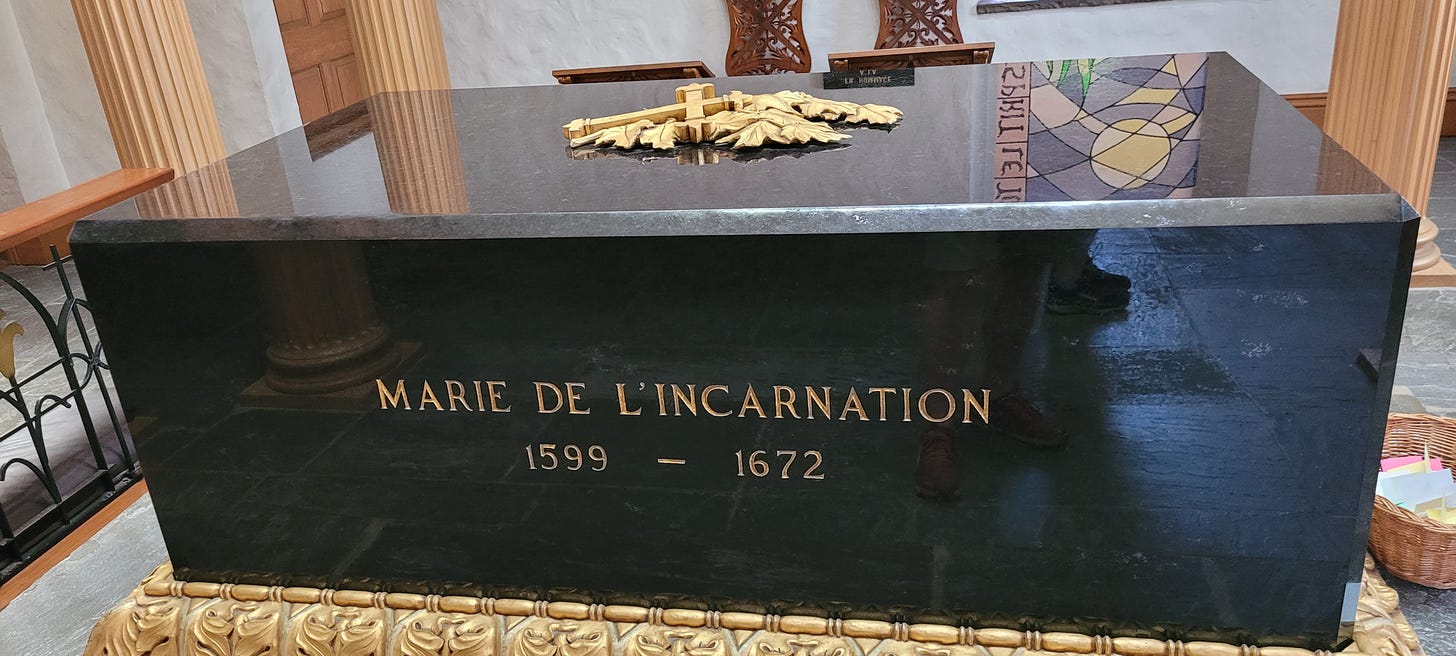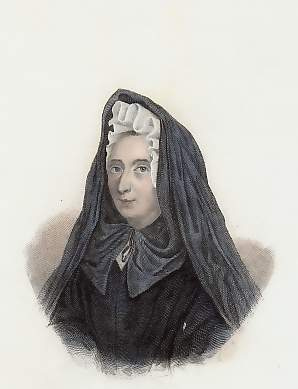The Saint Who Abandoned Her Son
In reading Enthusiasm (which we’re discussing in my online Book Club), I came upon this observation by Ronald Knox. In one of his chapters on Quietism, he analyzes the extraordinarily annoying Madame Guyon, and says …
Had she, in the course of her spiritual reading, come across the story of Marie de l'Incamation, who, half a century before, had deserted her little son to enter a convent, and then gone out to end her days as a missionary in Canada?
And I knew who he meant! - though I didn’t know what she had done.
Earlier this summer, my wife Karen and I spent a day in Quebec City. I took this photo in the Ursuline chapel …
To what is Msgr. Knox referring? Who is Marie de l’Incarnation? Or, should I say, St. Marie de l’Incarnation? Well, Wikipedia gives us a good summary …
In 1631, after working with a spiritual director for many years, [she] decided to enter the Ursuline monastery in Tours to answer her religious vocation. At that time she received the religious name by which she is now known. Joining the monastery required her to leave her young son, and he expressed much difficulty with the separation. Claude tried to storm the monastery with a band of school friends, and could repeatedly be found crying at the gates, trying to enter [my note: Claude was 11 at the time]. She left him in the care of the Buisson family, but the emotional pain of the separation would remain with them both. Later, when her son had become a Benedictine monk, they corresponded candidly about their spiritual and emotional trials.
Mary Dunn in “Mysticism, Motherhood, and Pathological Narcissism? A Kohutian Analysis of Marie de l’Incarnation” tells us more, quoting the saint (yes, the woman who abandoned her son to become a nun is a canonized saint) …
‘‘Seeing that from his infancy I had resolved to leave him in order to follow the will of God,’’ Marie admits, ‘‘[I] had not shown him those tender affections mothers are accustomed to shower upon their children,’’ neither caressing Claude nor permitting him to caress her in return.
The woman who is now officially St. Marie de l’Incarnation refused to give her infant son affection and abandoned him, allowing him to cry and beg for her at the grill in her monastery. This saint was (as Knox also calls Madame Guyon) the Mrs. Jellby of 17th century France and Quebec, saving souls thousands of miles away while neglecting her own children. Only at least Mrs. Jellby made you laugh.
Knox, in Enthusiasm, makes the connection between Marie de l’Incarnation and Madame Guyon for an obvious reason …
What makes me think that this example [of Marie de l’Incarnation abandoning and neglecting her son] influenced Madame Guyon's mind, at least subconsciously, is that one of the priests she consulted about her plans was Pere Claude Martin, the son in question.
That’s right! Madame Guyon, whose Quietist antics (Knox calls her a Quietist who can never be quiet) stirred up Bossuet and Fénelon, the Pope and the French court and much of France corresponded with the son Marie de l’Incarnation had abandoned! The son who (what else would he do?) ended up becoming a monk. Knox continues …
To Geneva, at any rate, [Madame Guyon] went, leaving her two sons, after somewhat perfunctory lamentations, to be looked after by relatives, but taking the daughter with her.
Pope Francis canonized Marie de l’Incarnation in 2014 (2014!) - waving the typical requirement of two miracles.
This leads me to ask a simple question: shouldn’t sanctity be something more than a personality disorder?
St. Marie de l’Incarnation, pray for us … and pray for Claude, the son you refused to love.







